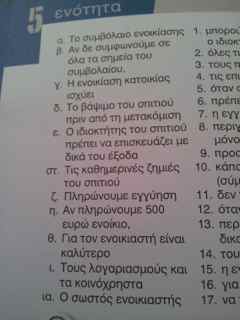 | στίγμα letter |
|
Hi, what is this letter all about ? I see it occasionally, after ζ i think and can't find out why it's still used sometimes ? Regards Robert |
 | Re: στίγμα letter |
|
It's hard to guess what exactly you saw, but I suspect that you encountered some medieval-style inscription. In Byzantium a lot of so called ligatures were used (multiple letters combined into single one). I saw a lot of such inscriptions on Greek orthodox icons and in some printed ecclesiastic books. http://en.wikipedia.org/wiki/Greek_ligatures |
 | Re: στίγμα letter |
|
Stigma represents the numerical value of ancient digamma, an obsolete letter from the first Greek alphabet. Digamma followed ε and preceded ζ in the original alphabet, that is, it was the sixth letter, so its numeric value was 6. Digamma was soon dropped from use in writing sounds, but its use as a written number continued for many centuries. In early medieval times, ligatured lunate CT (for Greek στίγμα) replaced the ancient symbol for digamma, although στίγμα in contemporary use is written as ΣΤ' in uppercase and as στ΄ or ς' in lowercase. However, στίγμα is now normally used only as the "alphabetic" ordinal for the number 6; that is, it now represents any inflected form of έκτος. For a little more about the role and value of στίγμα, see Addendum II (FYI: ordinals in "alphabetic" form) of "FYI: ordinals" in Discussion Forum 23. And if you're interested in the historical derivation and development of stigma, there's a good article in Wikipedia: Stigma (letter). Regards, Greg Brush [originally posted Tuesday, 9 December 2014, 03:38 PM] |
 | Re: στίγμα letter |
.........and this is the publication responsible! |

